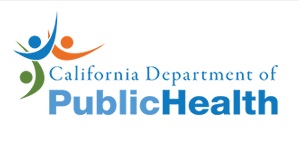Title Page
-
Conducted on
-
Prepared by
-
Ambulatory Clinic:
-
Location/Clinic:
Staff and Medical Staff
-
Have you received training to support your work?
-
Do you have education resources and opportunities available to you for professional development?
-
Do you use contracted staff?
-
Do you provide orientation to contracted staff?
-
Do you feel that the organization’s training and education adequately prepare you for preventing adverse events?
-
Do you know how to respond to an adverse event and other incidents?
-
Is there a skill-based competence assessment process for staff who work here? what is it?
-
What competencies are you required to have to work here?
-
Is the competence of contracted staff evaluated? How?
-
How do you know what a provider is allowed to do with patients?
Care of the Patient
-
What is your process to admit new patients?
-
What methods are used to identify the patient during the registration process?
-
What education and/or information do you provide to patients at admission and/or in the initial screening/assessment?
-
How do you ensure and confirm that the patient and family understand
-
what you share with them at that time?
-
What do you do for a patient that is non-English speaking?
-
If the patient presents at admission with any high-risk factors, such as diabetes or self-harm, what additional assessments are performed or ordered for referral, if any?
-
Does your physical space for admission permit privacy? How to you mitigate if admission is conducted in a noisy, busy area?
-
What information, education, and material do you provide to the patient at discharge?
-
How do you know the patient understands what you provided?
-
How do you follow up with patients after they are discharged? How do you ensure and confirm that patients understand what you share with them during follow-up?
-
Please explain the process for making the decision to send a patient to the emergency department.
-
Who orders tests in your organization? How do you document when an order is made?
-
How are patients informed of any necessary tests before discharge?
-
How are patients educated about the test?
-
How do you ensure and confirm that patients understand that information?
-
How do you educate and train staff on admission, discharge, and transitions of care processes?
-
How often do you provide staff with updates on these processes?
Assessment and Plan of Care
-
What kinds of screenings/assessments do you perform? Who conducts them?
-
How do you determine which screenings/assessments you will perform?
-
Where do you document screenings/assessments? May I see the documentation?
-
Can the results of a screening trigger a referral or a full assessment?
-
How would a member of the treatment team communicate the need for this comprehensive assessment to the appropriate team member?
-
Do you ever conduct any specialized or specific additional screenings/assessments for patients?
-
What kind of involvement have you had in the plan of care for this patient? How is this involvement documented?
-
Can you tell me about the plan of care for this patient?
Suicide risk assessment
-
What methods or criteria do you use to screen patients at risk for suicide?
-
When do you conduct suicide risk screenings and assessments?
-
How are they documented?
-
What do you do when potential risk factors are identified?
-
Are staff educated on suicide risk assessment?
-
Can you describe your process to prevent suicide among the individuals you serve? For example, what kinds of interventions do you employ for individuals at risk for suicide?
-
Tell me about your environmental risk assessment addressing suicide prevention.
Pain Management
-
Can you please explain your process for performing pain assessment? How is this documented?
-
How do you perform initial assessment for pain? When does this occur?
-
What kind of monitoring and reassessment for pain do you perform?
-
In addition to medication management, what other pain management techniques are used?
-
Please tell me your process to document assessment and care planning in relation to ongoing pain management. How is this communicated to staff?
-
Have you educated patients and family about the pain management process and treatment options? How is this education done?
Abuse and Neglect
-
What criteria do you use to identify who may be a victim of trauma, abuse, neglect, or exploitation?
-
When is an assessment performed? How is it documented?
-
To whom would you communicate suspicions of trauma, abuse, neglect, or exploitation?
-
How would you report this? when would you file a report of abuse, neglect or exploitation with you local agency?
-
Describe your understanding of the signs and symptoms of abuse or neglect?
-
What specific training have you received in recognizing signs and symptoms of abuse or neglect?
Nutrition
-
Do you have a process for nutrition screening/assessments? Describe.
-
What types of findings would necessitate a consultation with a dietitian?
Skin and Pressure Ulcers
-
Do you always assess the patient for skin and pressure ulcer risk? if so, when? how is the assessment documented?
-
How is the staff educated and trained to perform skin and pressure ulcer assessments? How do you communicate any concerns about skin and pressure ulcers issues during assessment?
-
What type of escalation do you normally plan for?
Fall Risk
-
What is the process for assessing a patient for falls risk?
-
What criteria are used for a falls risk designation?
-
What do you do if a patient is at risk for falls?
-
What kind of education do you provide to patients and families about falls risk and prevention?
-
How are staff members trained in falls risk and prevention? how often is that training provided?
-
How are patients and families educated about home environment hazards?
-
Does your organization address the potential of certain medications to trigger falls?
Operative and High-Risk Procedures
-
Do you have pre procedure interviews with patients/families for planned, non-emergency procedures?
-
What information do you collect in your pre procedure interview?
-
What clinical information must be available prior to the procedure?
-
How do you address preoperative abnormal diagnostic test results?
-
How do you address critical laboratory or radiologic values?
-
For patients who are going to receive moderate sedation, deep sedation or general anesthesia, does the provider responsible for the sedation or anesthesia conduct the preanesthesia assessment?
-
Is a history and physical examination required to be documented before a procedure requiring anesthesia services?
-
What happens if the H&P does not meet the policy requirements?
-
What are the rules surrounding documentation of the H&P?
-
Was patient education about the procedure documented?
-
Is there a requirement for a properly executed informed consent for this procedure?
-
Who is responsible for obtaining informed consent?
-
Informed consent is documented in the medical record according to policy.
-
The surgical site is marked according to policy.
-
There is a preprocedure verification process to ensure correct procedure, patient, site, etc.
-
The preinduction assessment is conducted immediately prior to the procedure.
-
There is a timeout conducted involving all members of the team actively participating.
-
The timeout is documented.
-
Any specimens removed are labeled in the presence of the patient.
-
All specimens removed are sent to pathology according to policy.
-
The patient is recovered according to policy.
-
The patient is discharged from the PACU according to criteria or anesthesia order.
-
There is an immediate post operative note that addresses:<br>1. Pre op diagnosis<br>2. Post op diagnosis<br>3. Procedure performed<br>4. Any assistants<br>5. Patient's condition/complications<br>6. Estimated blood loss<br>7. Specimens removed
Transfusions and Blood Products
-
Is there an order for blood or blood products?
-
Is there an informed consent for blood or blood products?
-
Is there a standard process for patient identification prior to transfusion?
-
Blood is administered according to policy?
-
Staff can describe the process for possible transfusion reaction identification .
-
The patient is monitored during transfusion according to policy.
Chemotherapy
-
Are you certified to administer chemotherapeutic infusions?
-
Staff articulate safety measures employed to ensure safe administration of chemo?
-
The use of PPE is done according to policy.
-
Chemo infusions are matched with positively identified patients and orders.
-
The patient's medication profile has been reviewed by a pharmacist prior to chemo?
-
Chemotherapeutic medications are labeled appropriately.
-
Chemotherapeutic medications are double checked.
-
Staff can articulate what providers can order chemotherapy.
-
Staff can articulate what adverse reactions are and what is done in response.
-
Patients education regarding side effects of chemo are documented.
-
Comments:
Waived/Point-of-Care Testing
-
There is oversight responsibility assigned for all testing in the organization, including waived testing.
-
Patients are positively identified prior to testing.
-
Staff competency regarding waived testing is assessed at least annually.
-
Staff properly perform quality controls.
-
Results of waived testing are documented in the medical record.
-
Results of waived tests are documented with normal ranges.
Transplants
-
There is a process for accepting and storing tissue.
-
The process is documented.
-
There are tissue logs.
-
Tissue storage equipment is monitored for proper operation.
-
There is a process for when tissue storage equipment fails.
-
There is a two way tracking mechanism for implanted tissue.
-
Staff verify that the tissue supplier has a current federal and state tissue-bank license.
Environment of Care / Life Safety / Infection Control Observations.
-
Environment of care / Life safety:
-
Infection Prevention observations:
















